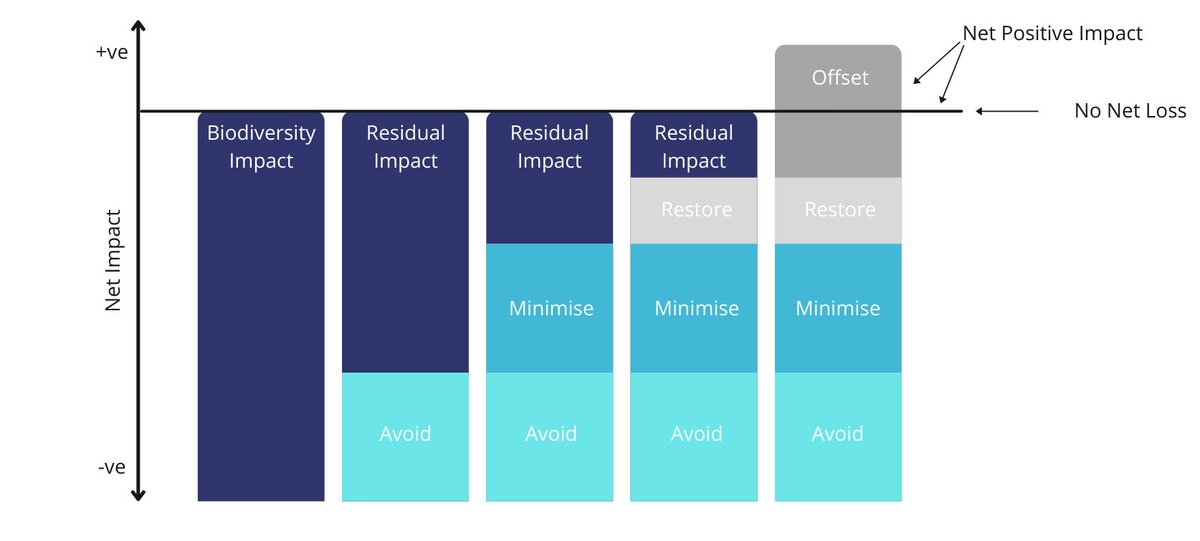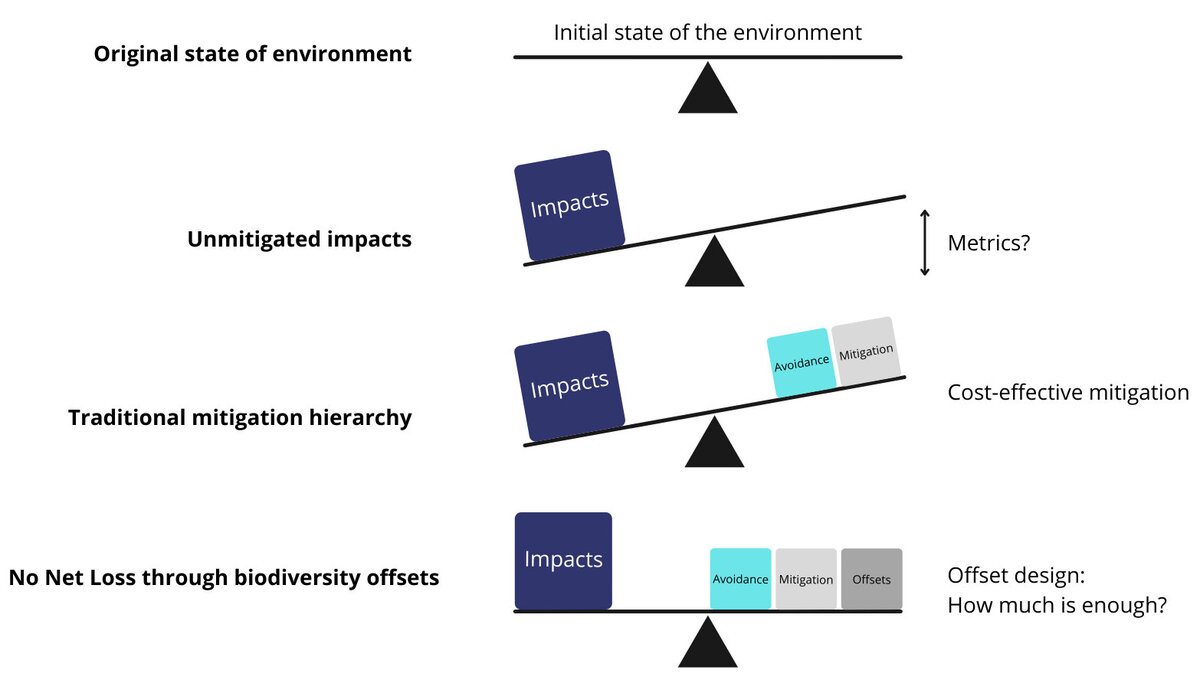Mitigation Hierarchy
Net positive and the Mitigation Hierarchy
The mitigation hierarchy is a widely used good practice framework that guides users towards limiting as far as possible the negative impacts on biodiversity from development projects. It can be applied to projects in any sector and is based on a sequence of four iterative actions: avoiding and minimising any negative impacts (prevention), before restoring and finally offsetting residual impacts (remediation).
Implementing the hierarchy is crucial for all development projects aiming to achieve No Net Loss (NNL) or Net Positive Impact (NPI) objectives for biodiversity. NNL is achieved when project impacts are balanced by actions in line with the mitigation hierarchy. NPI (also referred to as Net Gain) results when project impacts on biodiversity are outweighed by mitigation actions. Importantly, the effect of mitigation actions must be measurable to claim NNL or NPI.
We wrote a cross-sector guide for implementing the Mitigation Hierarchy on behalf of CSBI, which provides practical guidance, innovative approaches and examples to support implementation. The publication is aimed at environmental professionals working in, or with, extractive industries and financial institutions, who are responsible for overseeing the application of the mitigation hierarchy to biodiversity conservation, while balancing conservation needs with development priorities. Many of the core principles included in the guide are broadly applicable across multiple other sectors.

Sequential steps of the mitigation hierarchy
- Avoidance: the first step of the mitigation hierarchy comprises measures taken to avoid creating impacts from the outset, such as careful spatial placement of infrastructure, or timing construction sensitively to avoid disturbance. Examples include the placement of roads outside of rare habitats or key species’ breeding grounds, or timing of seismic operations when aggregations of whales are not present. Avoidance is the most effective and most certain mitigation measure. Achieving effective avoidance requires biodiversity to be considered in the early stages of a project.
- Minimisation: these are measures taken to reduce the duration, intensity and/or extent of impacts that cannot be completely avoided. Effective minimisation can eliminate some negative impacts, such as measures to reduce noise and pollution, designing powerlines to reduce the likelihood of bird electrocutions, or building wildlife crossings on roads.
- Rehabilitation/restoration: The aim of this step is to improve degraded or removed ecosystems following exposure to impacts that cannot be completely avoided or minimised. Restoration and rehabilitation are distinct: Restoration seeks to return an area to the original ecosystem that was present before impacts, whereas rehabilitation only aims to restore basic ecological functions and/or ecosystem services – such as through planting trees to stabilise bare soil. Rehabilitation and restoration are frequently needed towards the end of a project’s life cycle but may be possible in some areas during operation.
Collectively, avoidance, minimisation and rehabilitation/restoration serve to reduce, as far as possible, the residual impacts that a project has on biodiversity. Typically, however, even after their effective application, additional steps will be required to achieve overall NNL or NPI on biodiversity. - Offset: offsetting is a measure of last resort. It aims to compensate for any residual, adverse impacts after the implementation of the previous three steps of the mitigation hierarchy has been optimised. Biodiversity offsets are generally of two main types: ‘restoration offsets’, which aim to rehabilitate or restore degraded habitat, and ‘averted loss offsets’, which aim to reduce or stop biodiversity loss in areas where this is predicted. Offsets are often complex and expensive, so attention to earlier steps in the mitigation hierarchy is usually preferable.
Additional Conservation Actions: measures taken that have positive – but are difficult to quantify – effects on biodiversity. These qualitative outcomes do not fit easily into the mitigation hierarchy but may provide crucial support to mitigation actions. For example, awareness activities may encourage changes in government policy that are necessary for the implementation of novel mitigation, research on threatened species may be essential to designing effective minimisation measures, or capacity building might be necessary for local stakeholders to engage with biodiversity offset implementation.



